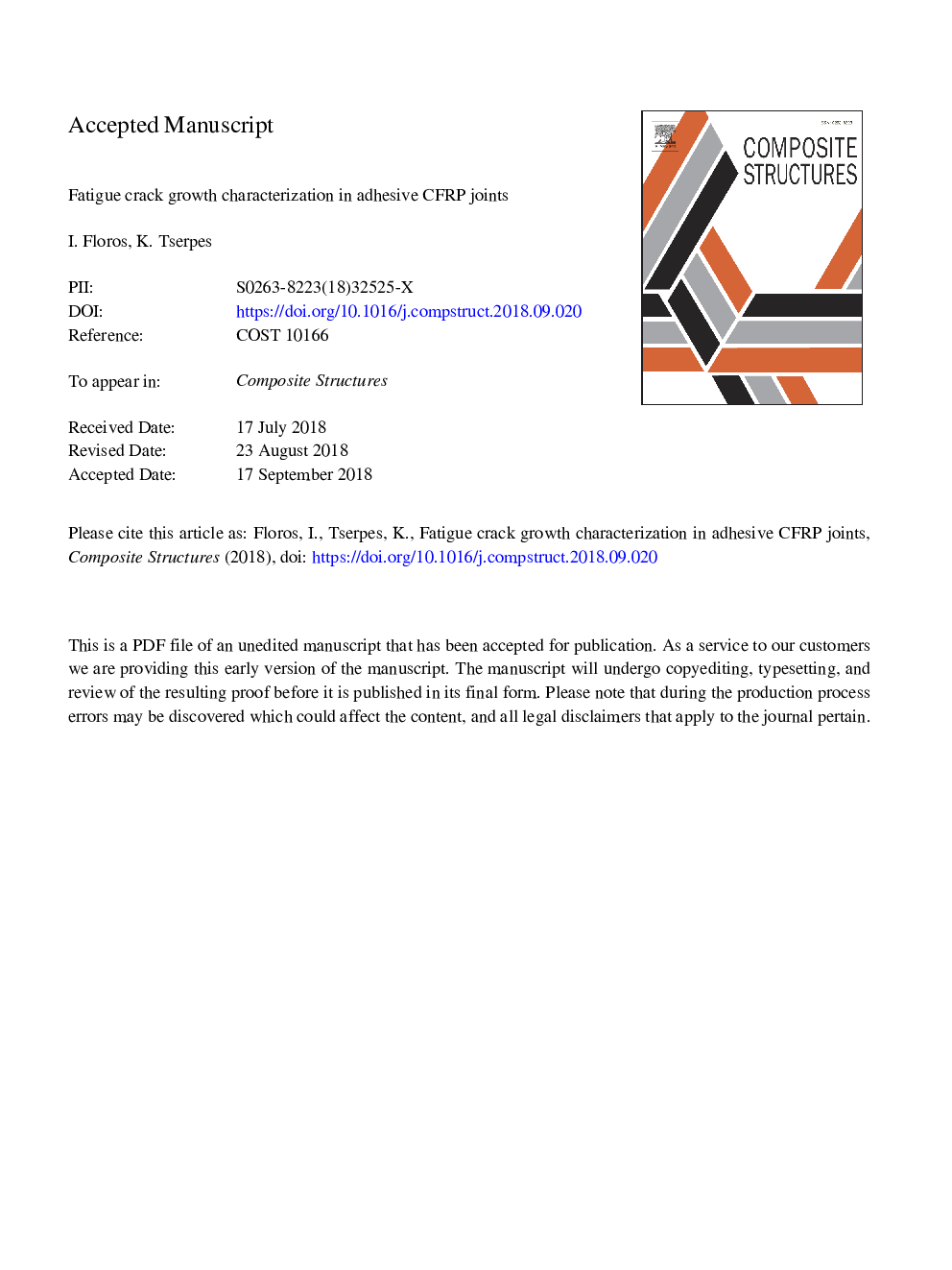| Article ID | Journal | Published Year | Pages | File Type |
|---|---|---|---|---|
| 11024271 | Composite Structures | 2019 | 30 Pages |
Abstract
Adhesive joints find an increasing use in lightweight structures, which is proportional to the evolution of carbon fiber-reinforced plastics (CFRPs). Understanding of fatigue crack growth behavior in adhesive CFRP joints is essential for the efficient maintenance and repair of existing joints and the design of new joints. Here, the fatigue crack growth behavior of adhesive CFRP joints under Mode-I, Mode-II and Mixed-Mode Iâ¯+â¯II loading conditions is characterized experimentally by means of Mode-I fatigue fracture toughness tests, Mode-II fatigue fracture toughness tests and the Mixed-Mode fatigue lap shear test. For the three different tests, the Double Cantilever Beam (DCB), the End-Notch Flexure (ENF) and the Cracked Lap Shear (CLS) specimens are used, respectively. Crack growth versus number of cycles is reported and modified Paris-laws are derived. The DCB specimens failed in cohesive failure mode while the ENF and CLS specimens in adhesive. The crack growth in the DCB specimens was more stable and showed a smaller scatter among the different specimens than the ENF specimens. Crack propagation with number of cycles in CLS specimen was almost linear. The results reported herein suggest a full experimental characterization of fatigue crack growth behavior of the considered aerospace CFRP/adhesive material system and can be proved very useful in the development and validation of fatigue crack growth simulation models.
Keywords
Related Topics
Physical Sciences and Engineering
Engineering
Civil and Structural Engineering
Authors
I. Floros, K. Tserpes,
